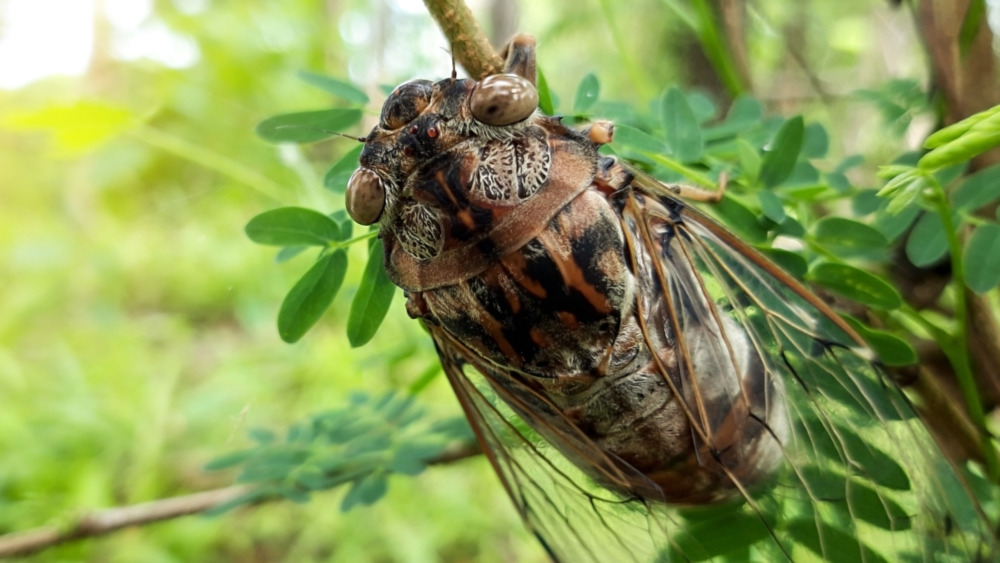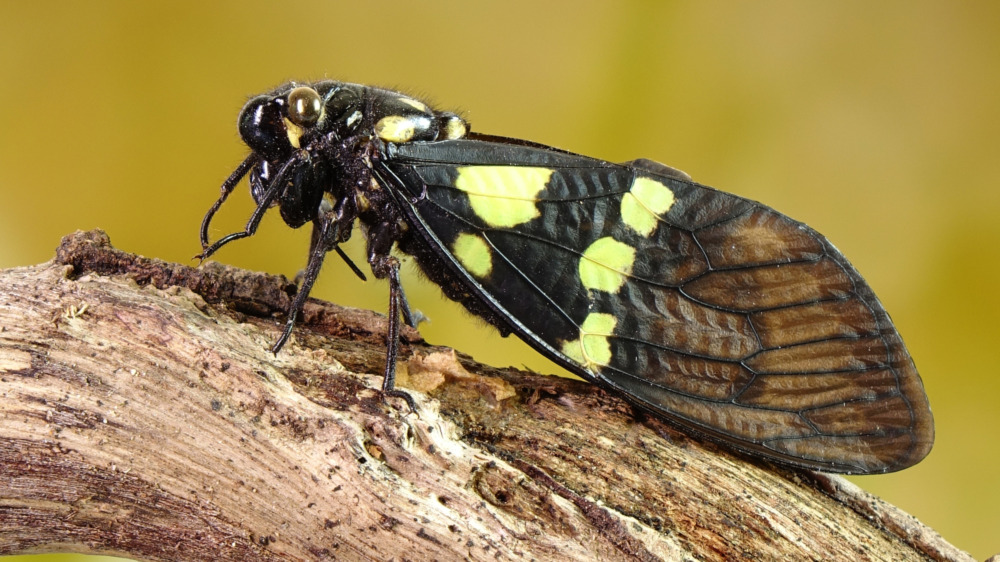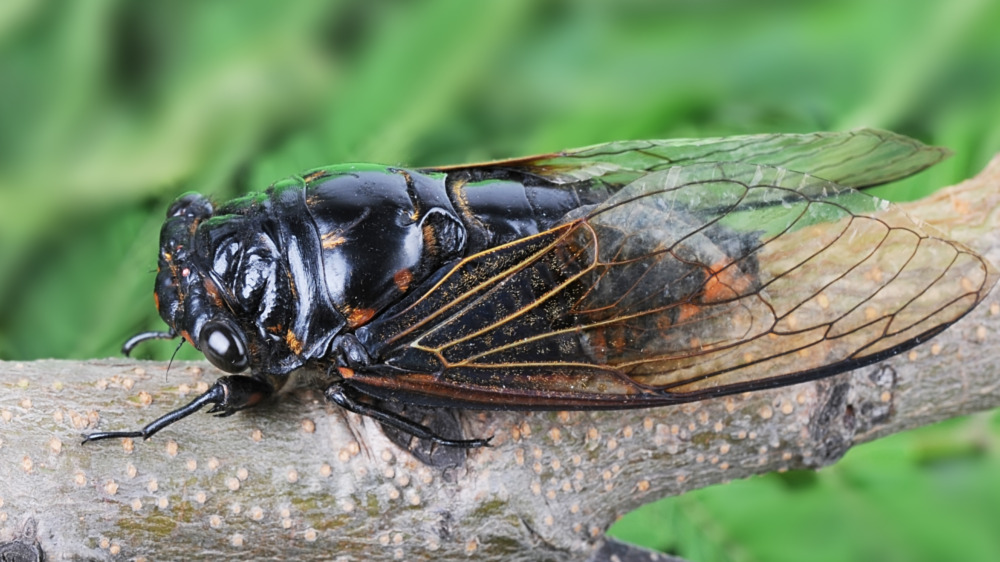Everything You Need To Know About Cicada Invasions
The cicadas are coming! As ABC News noted, 2021 looks to be a banner year for the famously noisy insects. The critters are known for their unusual life cycles, which include spending a decade or more under the ground, only to emerge to spend the last few weeks of their lives on the surface. While they're here, they create a noisy cacophony in their last-ditch efforts to attract mates while the clock ticks down on their life cycles.
Cicadas also have been a part of folklore for centuries. In parts of Asia, according to Farmers Almanac, they symbolize reincarnation, while in ancient Greece, they were associated with the concept of immortality. In North American folklore, legend has it that the bugs can be a harbinger of an early winter.
Unfortunately, entomology — the study of insects — is a complicated science not fully understood by the general public, which means mystery and confusion surround cicadas. Further, climate change is wreaking havoc on their environments, perhaps forever altering the precise cycles of death and life that have governed the cicadas' lives for hundreds of millions of years.
Not all cicadas come and go according to predictable cycles
You may have heard that cicadas emerge every 17 years. While that is true in some cases, it's not true of all cicadas, and in fact, it's only a small part of a much larger story.
First, not all cicadas are of the type that live underground according to predictable cycles. In fact, the noisy critters who emerge on-schedule every so many years are limited to a small subset of the thousands of species of cicadas.
As National Geographic explains, there are over 3,000 species of cicadas, all but a handful of which emerge every year. The ones who disappear for years at a time are known as "periodical cicadas," while the remainder are called "annual cicadas." Further, not all periodical cicadas live according to the 17-year life cycle — some live on 13-year cycles, according to Farmers Almanac. Finally, periodical cicadas are limited exclusively to North America, to habitats east of the Great Plains, according to the National Wildlife Federation.
You have to know which brood is having its year, too
In much the same way that lions are grouped into prides, fish are grouped into schools, and dolphins are grouped into pods, cicadas are grouped into broods. And when it comes to periodical cicadas, each brood effectively lives and dies according to its own cycle. What this means is that, in any given year, one or more cicada broods may emerge in one or more regions of the Eastern and/or Midwestern United States.
According to Farmer's Almanac, 2021 this is the year for Brood X (10), also called the Great Eastern Brood, described as "massive." Unfortunately, the brood's range is limited to parts of Delaware, Georgia, Illinois, Indiana, Kentucky, Maryland, Michigan, North Carolina, New Jersey, New York, Ohio, Pennsylvania, Tennessee, Virginia, West Virginia, and Washington D.C. Lovers of the cicadas' song who live in those states can expect peak performance from late May through June.
Insectophiles who live in the South are out of luck this year, and will have to wait until Brood XIX (19), or the Great Southern Brood, emerges again in 2028.
They can be as noisy as a jet airplane
Cicadas aren't just noisy. They're the noisiest of all insects — at least, when it comes to the limits of the human ear.
As How Stuff Works explains, the insect creates its sound by vibrating organs known as tymbals. Amplified by the creature's body, and when multiplied by hundreds, if not thousands, of cicadas in a small area (such as a yard or a small section of a forest), the humming or buzzing of the creatures can reach 120 decibels. That's roughly on par with the volume of a jet engine, according to Sciencing, and approaching the threshold at which sound causes pain in the human ear. In fact, so loud are the cicadas that they've evolved a sort of protection against their own noise.
The sound they create serves multiple purposes, the first and most important of which is to attract mates. It also drives off predators, such as birds. This protects not only individual cicadas, but its own brood as a whole, by interfering with the birds' ability to communicate with each other and thus, hunt in groups.
Cicadas aren't dangerous to humans
Though the concept of a "cicada invasion" sounds terrifying, the fact of the matter is, cicadas aren't dangerous to humans. For one thing, even though they superficially resemble locusts, which can and do bedevil humans (for example, by decimating crops), they are not the same order of insects as their more fearsome cousins, according to Farmers Almanac. Further, cicadas neither bite nor sting, and in fact, are keen to leave other animals alone as long as the other animals are no threat to the cicada.
Pet owners, however, should keep a closer eye on their pets when cicadas are about. According to WXIX, curious dogs who eat too many cicadas may find themselves with an upset stomach. Fortunately, the insects are non-toxic.
In one indirect way, cicadas can actually be helpful to humans. A bit of folklore says that the so-called "Dog Day cicadas," an annual species which appears in late summer, predict when winter will come. Specifically, legend has it that the first frost will happen exactly six weeks after they emerge.
Climate change may be upsetting the cicadas' natural cycles
Unfortunately, it seems that the delicate balance of nature that governs cicadas' life cycles, in particular that of periodical cicadas, is in the process of being upset by climate change.
Writing in The Washington Post, ecological scientist Chris Evans said that one day in 2017, she and some loved ones were walking around the city's suburbs when she was struck by the sound of cicadas. Living in the territory of Brood X, she didn't expect the animals to emerge for several years. Yet there they were. It was not the first time a brood of cicadas had emerged unexpectedly early. Scientific literature going back as far as 1969 has documented early emergence of cicada broods. She suspects climate change has something to do with it.
"The reasons for early emergences are not fully understood, but we expect climate change plays a role ... These bugs are changing dramatically as humans take a toll on the environment," she wrote.





